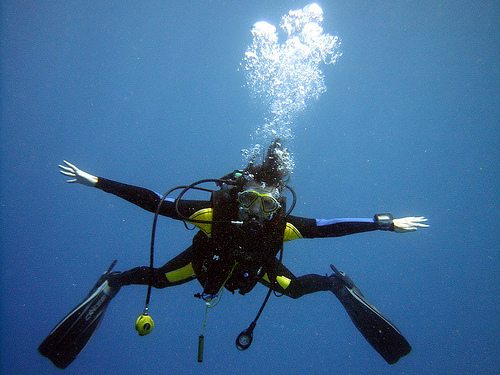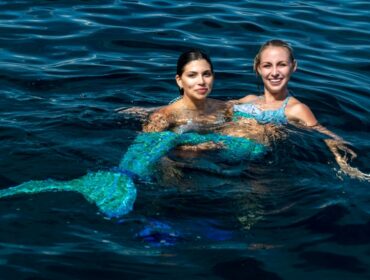You’ve probably observed the difference between gangly awkward divers who shuffle and flap their way through the water kicking up sand and scaring away every creature in their path including other divers; and an experienced diver that effortlessly and gracefully glides underwater with only the slightest of movements. This comes from an understanding that less is more in diving. Unlike sky diving, scuba diving is all about creating less drag and streamlining both your gear and body for better hydrodynamics. By minimizing any resistance underwater you automatically minimize exertion and in turn reduce your air consumption, both important factors of diving. So how you streamline in diving?
The first aspect of streamlining involves streamlining your scuba gear and equipment. Start thinking about this when you’re out buying the diving gear. Make sure everything especially your Buoyancy Compensator is the right size and fits snugly. When looking for a BCD, if you intend on doing just some fun warm-water recreational diving and not a lot of cold water or technical diving, you may want to consider looking for a lightweight and compact travel BCD that fully functions and serves its purpose but is not as bulky or extra-rugged with multiple ‘D’ rings and attachments. Getting the right size BC is very important. A loose fitted BCD will allow water to flow between your body and the BC creating unnecessary drag. If the BC is to small you risk restricting your breathing when it’s inflated and you don’t want that either.
Scuba accessories is another factor to consider when streamlining your gear. If you aren’t much of a snorkel user when diving you may want to opt out of wearing one at all. Snorkels can increase drag (though not significantly) and sometimes pull at your mask causing it to flood. If you value a snorkel as a safety item, then opt for a basic light weight one or maybe even one of those new folding ones which you can put in your pocket rather than attach to your mask. Dive-slates too are better tucked into a BC pocket rather left to hang clipped to the BC.
The key with all your gear is to eliminate any extras and carry only what you need, tuck everything away (including alternate air sources, gauges etc.) and keep everything as close to your body as possible.
The Second important aspect of streamlining is to streamline your body and it’s movements. Flailing arms and bent knee kicking doesn’t do anything for your movement and only increases water turbulence and resistance. Firstly perfect your fining and style of kicking- your legs should remain straight at the hips, toes pointed and knees slightly bent or straight.Kick with a long, slow, wide motion which should easily propel you forward at a steady pace or you may employ a flutter kick. Either way get you fining down to a “T” and don’t use your hands in any way. A good way of stopping yourself from using your arms unconsciously is to fold them across your chest or hold your gauge along your torso.
Think dolphin- smooth, sleek and graceful and you’ll start feeling more hydrodynamic and streamlined which lead you to be a better diver.





